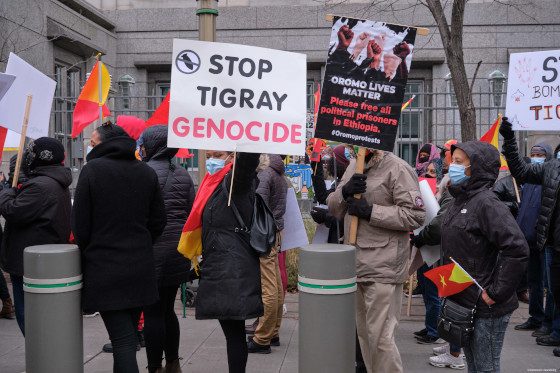On December 09 2020, the Ethiopian government has admitted that it has fired at and arrested UN staff who were visiting refugee camps in Tigrai. Early this month, UN High Commissioner for Refugees Filippo Grandi called for USD147 million in international support to help refugees from Tigrai, northern Ethiopia. He also called, as did other world leaders, for a mediation process to end a war that has caused widespread human displacement. The Ethiopian government continues to obstruct access to humanitarian aid. Endangering the conditions of life for refugees and other civilians by deliberately blocking access to food and medicine may amount to a crime against humanity as laid out under the Rome Statute.
Humanitarian crisis
Ethiopia is at war with itself in various regions of the country, with the most intense fighting in Tigrai regional state (to the northwest) and Oromia (southwest). The central government’s attack on Tigrai has already displaced millions, among them 47 000 refugees now seeking protection in Hamdayet (Kassala) and Lugdi (Gedaref), Sudan. Forty-three per cent of Tigraian refugees are female, and more than 45 per cent are under 17 years old. Their numbers are expected to reach 200 000 within weeks. The risk of trafficking and offers of help for secondary migration to Libya and Europe has been reported. With the addition of another million new internally displaced persons (IDPs) in the war zone, the total in Ethiopia will exceed three million. This massive level of displacement represents a significant humanitarian burden at a time when, according to the UN’s Mark Lowcock, ‘global humanitarian needs have never been higher’. Furthermore, the harrowing accounts of refugee witnesses of the atrocities that they escaped in Ethiopia indicate potential war crimes, a crime against humanity, and genocide.
This is a part of a blog post published by Mehari Taddele Maru.
